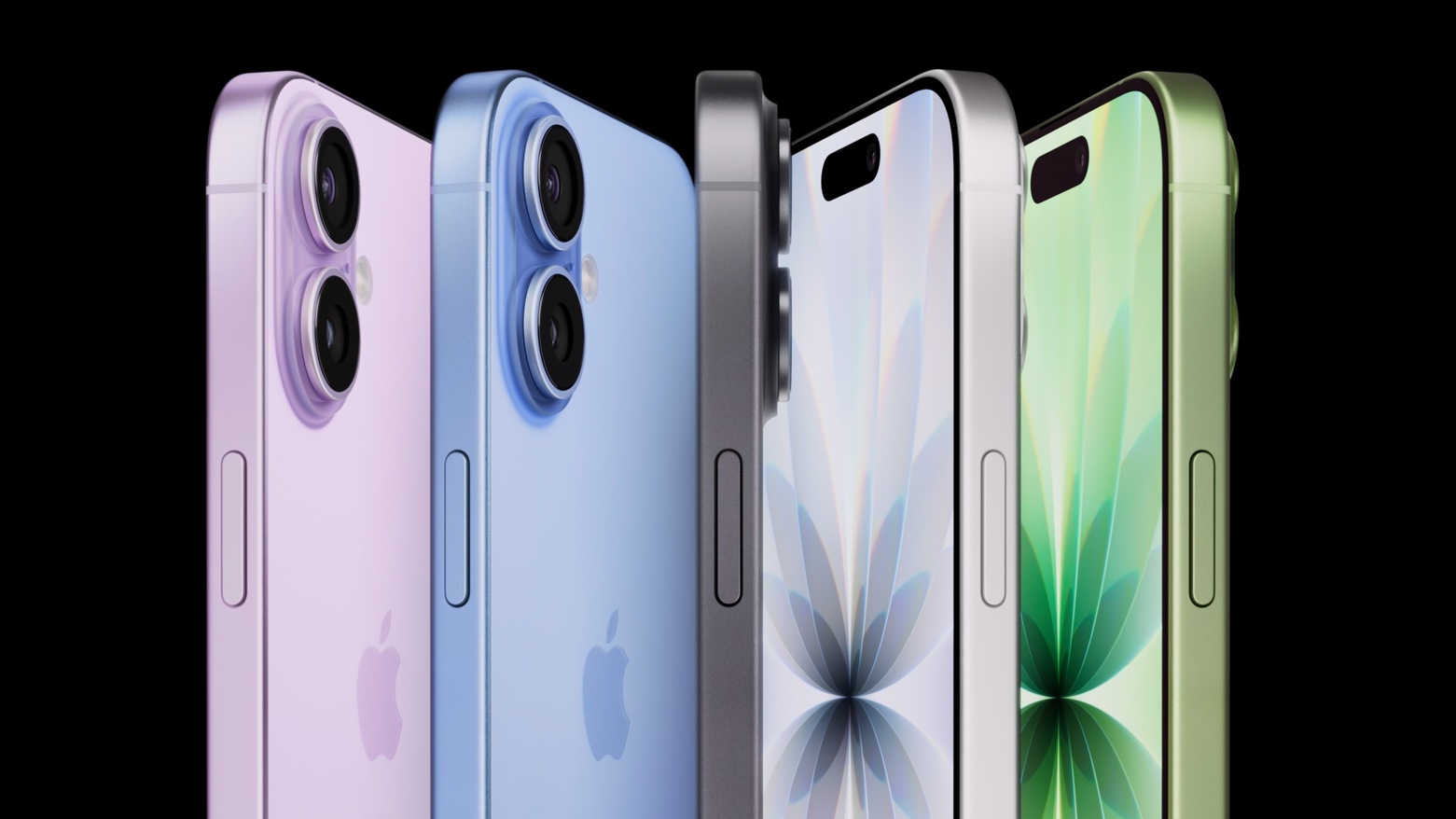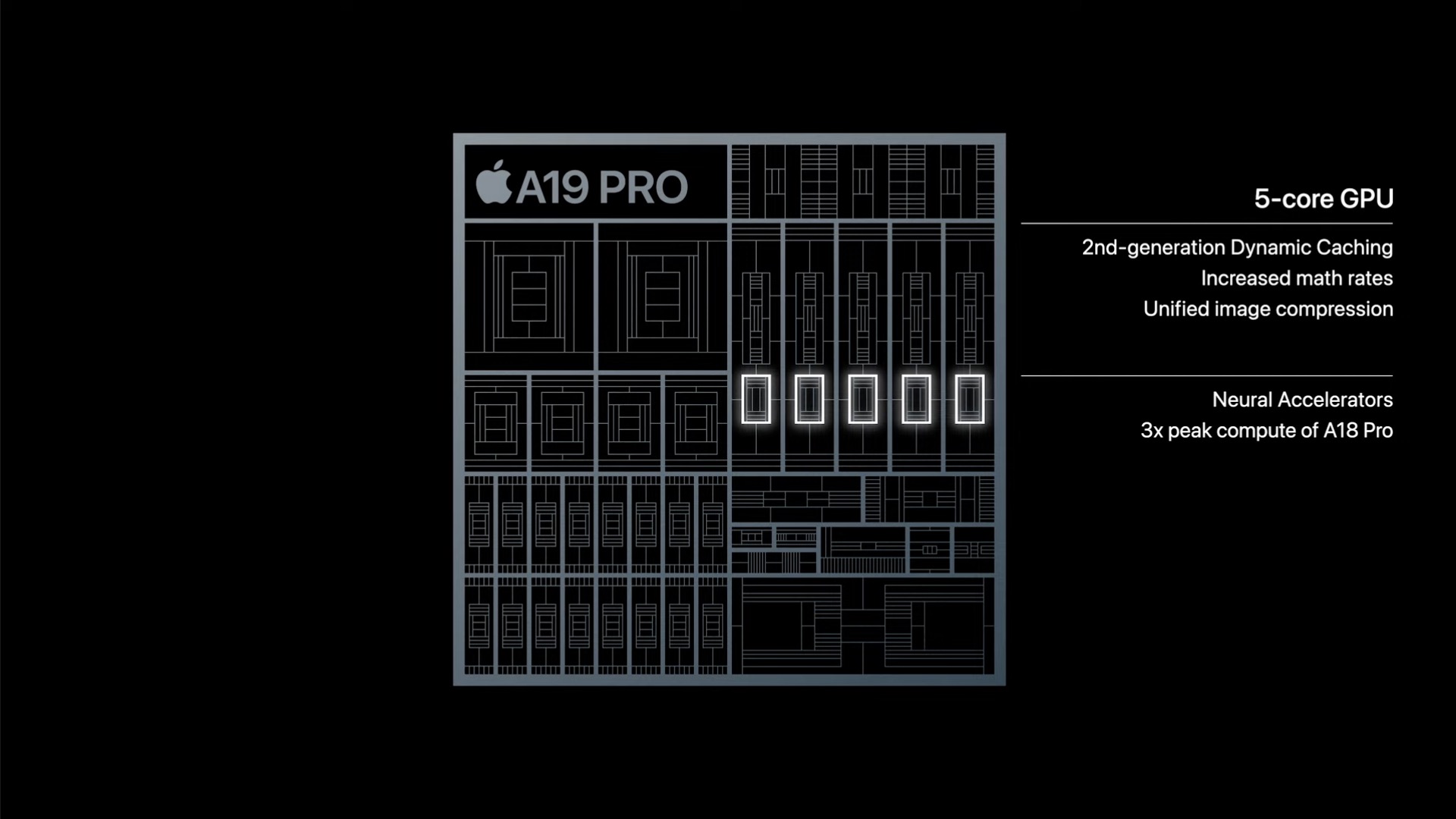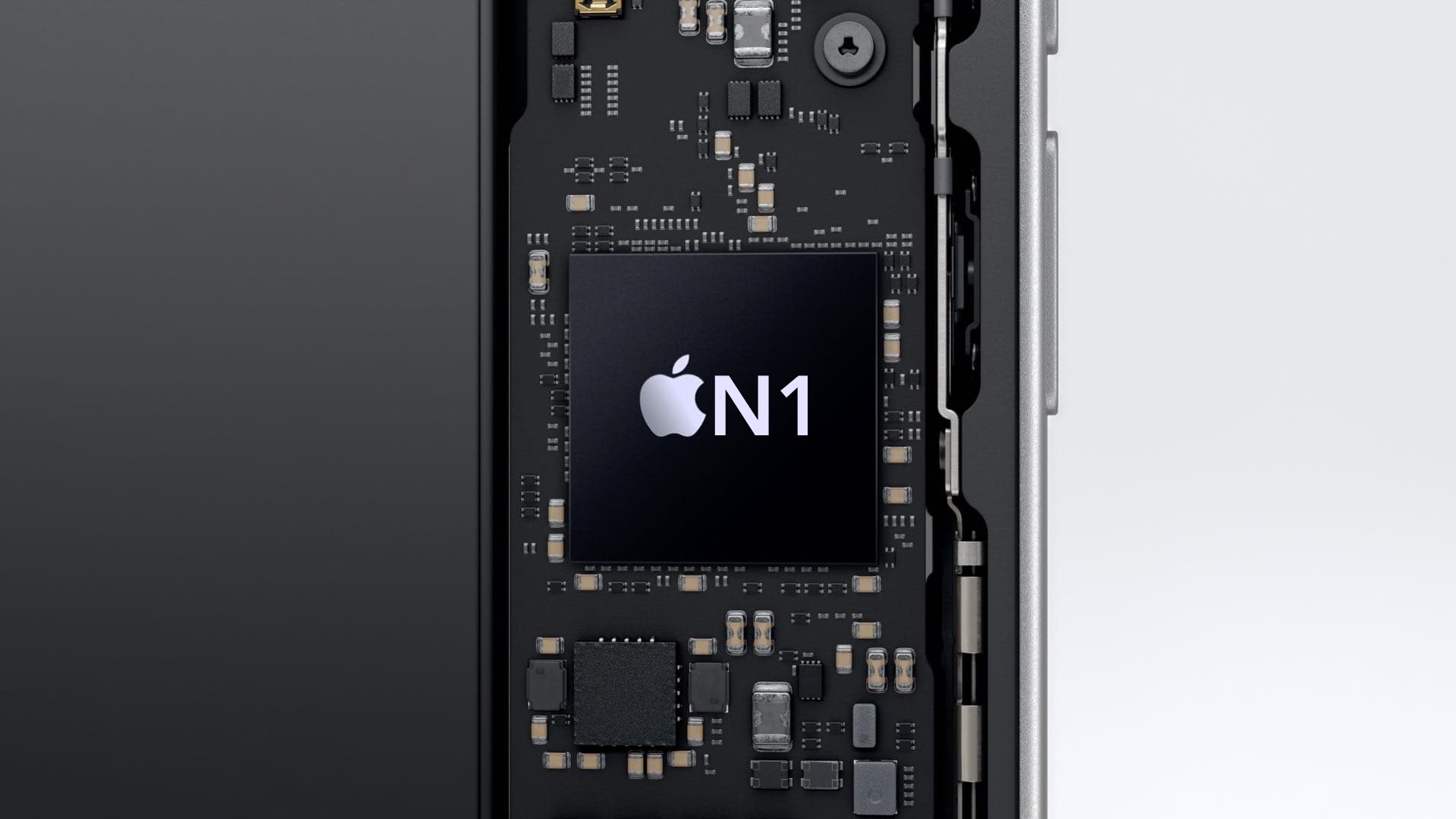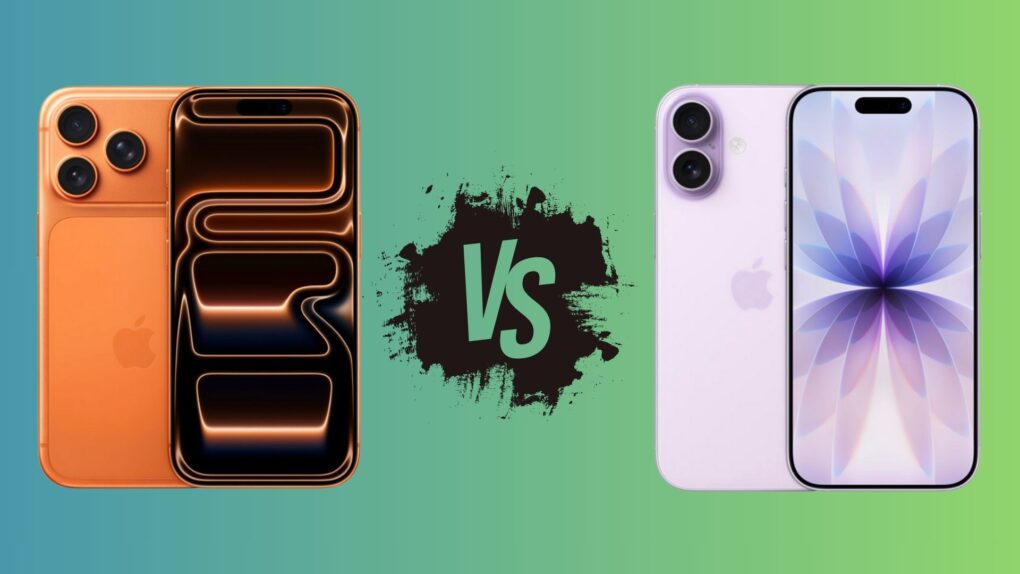Two closely matched heavyweights square off this year in Apple’s iPhone lineup: the iPhone 17 vs. the iPhone 17 Pro. On paper, the gap between the two has never been narrower. But look closer, and you’ll find a few key differences that could sway your buying decision.
The iPhone 17 Pro has a few tricks up its sleeve that make it the ultimate choice for power users. But is it worth the extra $300? Find out in this iPhone 17 vs. iPhone 17 Pro. comparison.
This post contains affiliate links. Cult of Mac may earn a commission when you use our links to buy items.
iPhone 17 vs. iPhone 17 Pro
The iPhone 17 and the iPhone 17 Pro share plenty of similarities this year. Both get a brighter 120Hz ProMotion display with antireflective cover glass, along with improved battery life, faster charging speeds and a base storage bump to 256GB.
On the surface, they might seem nearly identical. But once you dig deeper into the cameras, design and performance, the differences start to show — and that’s where the iPhone 17 Pro justifies its premium.
Table of contents: iPhone 17 vs. iPhone 17 Pro
- Design: Bold vs. boring
- Display: ProMotion goes non-Pro
- Chipset: Unsurprisingly, the Pro wins
- Camera: Pro-tastic
- Connectivity: Say hello to Apple’s N1 networking chip
- Battery life: Longer than ever
- Price: A $300 gap
- Conclusion
Design: Bold vs. boring

Photo: Apple
- iPhone 17 Pro: 150 mm x 71.9 mm x 8.75 mm; 206 grams; IP68, aluminum unibody, Ceramic Shield 2 front, Ceramic Shield back, Action button, Camera Control
- iPhone 17: 149.6mm x 71.5mm x 7.95mm; 177 grams; IP68, aerospace-grade aluminum with color-infused glass back, Ceramic Shield 2 front, Action button, Camera Control
Apple gave its iPhone lineup a major design revamp this year. The iPhone Air took the slim, ultra-sleek route, while the Pro adopted a new aerospace-grade, 7000-series aluminum alloy chassis and a bulkier, heavier build. (Apple also introduced a bold new color: cosmic orange.)
Sadly, the regular iPhone 17 got no such design love. Barring new colors and a more durable front glass, it looks the same as last year’s iPhone 16.
That’s not necessarily a bad thing. But if you’re tired of the same old iPhone look, the iPhone 17 Pro might win you over. Its enlarged camera plateau and two-tone back make it a real attention-grabber (especially in that new orange color). Plus, the Pro phones get a superior cooling system for better performance, though this comes at the cost of additional weight and thickness.
It’s also more durable, with the Ceramic Shield on the rear providing up to 4x better protection against drops.
Besides the design, the rear plateau helps free up significant internal space. And that enables Apple to fit in the largest battery ever in an iPhone.
If you want a slim and light phone but feel the iPhone Air makes too many compromises, the iPhone 17 is a better and more affordable alternative. On the other hand, if you want a phone with great battery life and a new design — and don’t mind the extra heft — the iPhone 17 Pro is the way to go.
Display: ProMotion goes non-Pro

Image: Apple
- iPhone 17 Pro: 6.3-inch Super Retina XDR display, 2,622 x 1,206 pixels, 120Hz ProMotion, Haptic Touch, True Tone, Always-On Display, Dynamic Island, HDR10, Dolby Vision, 1,000 nits typical brightness, 3,000 nits peak brightness, 1 nit minimum brightness, Ceramic Shield 2 cover glass
- iPhone 17: 6.3-inch Super Retina XDR display, 2,622 x 1,206 pixels, 120Hz ProMotion, Haptic Touch, True Tone, Always-On Display, Dynamic Island, HDR10, Dolby Vision, 1,000 nits typical brightness, 3,000 nits peak brightness, 1 nit minimum brightness, Ceramic Shield 2 cover glass
Previously, Apple reserved its 120Hz ProMotion displays for the iPhone Pro. It has been a key differentiating factor between the Pro and regular models.
This year, Apple leveled the playing field by bringing ProMotion to the regular iPhone 17. Both the iPhone 17 and 17 Pro feature a 6.3-inch Super Retina XDA display with a 1Hz to 120Hz adaptive refresh rate. They each can hit a peak brightness of 3,000 nits, and a dim-to-dark minimum of just 1 nit.
The upgraded panel also brings Always-On Display support to the regular iPhone 17.
Even better, like the iPhone 17 Pro, the iPhone 17 uses a new Ceramic Shield 2 cover glass. Besides being more durable, it reduces reflections by 3x, leading to a better viewing experience.
iPhone 17 Pro vs. iPhone 17 chipset: Unsurprisingly, the Pro wins

- iPhone 17 Pro: A19 Pro, 6-core CPU with two performance cores and four efficiency cores, 6-core GPU with Neural Accelerators, 16-core Neural Engine, hardware-accelerated ray tracing, up to 1TB storage (up to 2TB on iPhone 17 Pro Max)
- iPhone 17: A19, 3nm fab, 6-core CPU, 5-core GPU with Neural Accelerators, 16-core Neural Engine, hardware-accelerated ray tracing, up to 1TB storage
As in previous years, the iPhone 17 uses an inferior version of the Pro chip found on the Pro models. Yet, the iPhone 17’s A19 SoC is no slouch, delivering 50% faster CPU performance and 2x faster GPU performance than the iPhone 13’s A15 Bionic. More importantly, like the A19 Pro, each GPU core features Neural Accelerators. This allows the phone to run generative AI models on-device and provides better performance when running AAA games.
As for the iPhone 17 Pro’s A19 Pro SoC, it lives up to its Pro moniker. Apple’s press release says it is its “most capable iPhone chip yet,” with the 6-core CPU being the “fastest CPU in any smartphone.” And the 6-core GPU delivers unrivaled performance thanks to a larger cache and additional memory.
More importantly, the iPhone 17 Pro features a vapor chamber to cool down the A19 Pro. This significantly improves sustained performance, with Apple boasting a 40% improvement over its previous iPhone.
In benchmark tests with Geekbench 6, the iPhone 17 Pro scores around 9950 on the Multi-Core test, versus the base model iPhone 17 getting about 9300. That makes the Pro about 7% faster.
The iPhone 17 Pro also stands out with 12GB RAM — 4GB more than the iPhone 17. This extra memory should give the Pro phone more breathing room for multitasking today and help it handle AI-powered features more efficiently in the years ahead.
Camera: Pro-tastic

Photo: Apple
- iPhone 17 Pro: Rear: 48MP f/1.78 Fusion camera, second-gen sensor-shift stabilization, 48MP f/2.8 telephoto camera, 0.5x to 8x optical zoom; 48MP f/2.2 Ultra Wide, macro photography; LiDAR Scanner, Smart HDR 5, Adaptive True Tone flash, Cinematic mode (4K HDR@30fps), Action mode, Apple Log 2, ProRAW and ProRes support, genlock compatible, 4K 120fps Dolby Vision video recording, spatial video recording, wind noise reduction, Audio Mix. Front: 18MP Center Stage camera, ultra-stabilized video, Dual Capture
- iPhone 17: 48MP f/1.6 Fusion camera, sensor-shift stabilization; 48MP f/2.2 Ultra Wide, macro photography, Smart HDR 5, True Tone flash, Cinematic mode (4K HDR@30fps), Action mode, spatial video recording, wind noise reduction, Audio Mix; Front: 18MP Center Stage camera, ultra-stabilized video, Dual Capture
Cameras have always been the major point of difference between Apple’s regular and Pro iPhones. And the iPhone 17 Pro and iPhone 17 prove no different.
The Pro model comes equipped with a triple-camera setup. It retains the 48MP Fusion primary and 48MP Ultra Wide sensors from last year, while adding a brand-new 48MP telephoto lens.
This lens features a next-generation tetraprism design with a 56% larger sensor, allowing for sharper shots in daylight and significantly better low-light performance. It offers native 4x optical zoom at 100 mm. And Apple says it delivers optical-quality images at 200 mm (8x zoom). Digitally, you can zoom up to 40x to get nearer to your subject.
On the other hand, the regular iPhone 17 sticks to a dual-camera system. It features a 48MP primary shooter — a smaller sensor than what you get on the iPhone 17 Pro — paired with a faster f/1.6 aperture. It gets the same 48MP Ultra Wide as the Pro model with macro photography support. While this setup is still versatile enough for everyday photography, it lacks the optical zoom range of the Pro.
Pro-level details: Support for serious content producers
Besides the more versatile hardware, the iPhone 17 Pro packs more Pro-level software features. It supports advanced formats like Apple Log 2, ProRAW, ProRes, and even genlock compatibility, catering to content creators and professionals. The regular iPhone 17 misses out on these features, but most average users won’t care about them.
Both phones can record Cinematic mode at 4K HDR 30fps and shoot Dolby Vision. However, the iPhone 17 Pro can push things further with 4K 120fps Dolby Vision recording.
The selfie camera sees a notable upgrade on both the iPhone 17 Pro and iPhone 17. Apple swapped in a new 18MP Center Stage shooter with a larger, square-shaped sensor. This unique design lets you capture photos in landscape orientation without awkwardly rotating the phone. And with Center Stage, the camera automatically pans and adjusts during video calls. This ensures you are in the frame even when moving around.
On the iPhone 17 Pro, you also get a studio-quality four-mic array.
Connectivity: Say hello to Apple’s N1 networking chip

Image: Apple/Cult of Mac
- iPhone 17 Pro: 5G (sub-6GHz and mmWave), Emergency SOS via satellite, Roadside Assistance via satellite, Thread networking, high dynamic range gyro, Crash Detection, dual eSIM slots, N1 chip, Wi-Fi 7, Bluetooth 6, precision dual-frequency GPS, USB-C (up to 10Gbps), second-gen Ultra Wideband chip
- iPhone 17: 5G (sub-6GHz and mmWave), Emergency SOS via satellite, Roadside Assistance via satellite, Thread networking, high dynamic range gyro, Crash Detection, dual eSIM slots, N1 chip, Wi-Fi 7, Bluetooth 6, precision dual-frequency GPS, USB-C (up to 480Mbps), second-gen Ultra Wideband chip
On paper, there’s not much difference from a connectivity viewpoint between the iPhone 17 Pro and iPhone 17. They support the latest connectivity standards, including Wi-Fi 7 and Bluetooth 6. And Apple uses its in-house N1 chip to handle connectivity on both models. It says the chip “improves the overall performance and reliability of features like Personal Hotspot and AirDrop.”
The only real difference: iPhone 17 Pro gets a redesigned antenna system integrated around its expanded camera plateau. Apple says it enables “the highest-performing antenna system ever in an iPhone.”
Battery life: Longer than ever

Image: Apple
- iPhone 17 Pro: Up to 33 hours of video playback; 50% fast charge in 20 minutes with 40W adapter; 25W MagSafe and Qi2 wireless charging support
- iPhone 17: Up to 30 hours of video playback, 50% fast charge in 20 minutes with 40W adapter; 25W MagSafe and Qi2 wireless charging support
Despite packing a faster chip, Apple says the iPhone 17 Pro delivers longer battery life than the base model. It can supposedly provide 33 hours of video playback — three hours more than the iPhone 17.
Both figures sound impressive, and the new iPhones should comfortably last a full day of heavy use.
Charging is faster, too. The two iPhones can now hit 50% in just 20 minutes with a wired charger. And if you prefer going wireless, the iPhone 17 lineup supports 25W speeds using a MagSafe or Qi2.2-compatible charger.
iPhone 17 Pro vs. iPhone 17 price: A $300 gap
- iPhone 17 Pro: Starts at $1,099 for 256GB storage, with a $200 bump for the 512GB variant; iPhone 17 Pro Max starts at $1,199
- iPhone 17: Starts at $799 for 256GB storage
Technically, Apple did not raise the iPhone 17 Pro price this year, although it did discontinue the 128GB entry-level variant. So, instead of $999, you must now pay $1,099 to get the iPhone 17 Pro. Upgrading to the 512GB model will cost you another $200.
The iPhone 17 starts with 256GB of base storage, too. But unlike the Pro, Apple did not bump its price — it still starts at $799.
iPhone 17 vs. iPhone 17 Pro: Conclusion
Every year, the gap between Pro and non-Pro iPhones seems to shrink. With the iPhone 17, that gap is closer than ever, as it inherits nearly all the standout features of its Pro sibling (except for the Pro’s advanced camera system). This includes a 120Hz ProMotion display with an antireflective cover glass, improved battery life, faster charging speeds and increased base storage.
For most people, the iPhone 17 is the obvious pick. It gives you almost everything you need without pushing your budget. But if you want the best cameras, the longest battery life and pro-level video tools, the iPhone 17 Pro is the one to get.
Ultimately, the decision comes down to whether you want merely excellent or the absolute best Apple has to offer.
Buy now
iPhone 17 Pro: Apple or Best Buy
Apple's most powerful iPhone gets a redesign and impressive new capabilities. The iPhone 17 Pro's aluminum unibody design looks different for sure, with a wider camera plateau. But the big changes are inside: the powerful A19 Pro chip and a vapor chamber to cool it off for maximum performance.
- Base model jumps to 256GB of storage.
- 48MP rear cameras, with 8x optical zoom.
- 18MP Center Stage front camera for better selfies.
- Supports ProRes RAW for studio-quality video.
- Only three colors: silver, deep blue and cosmic orange.
iPhone 17 brings some real upgrades over previous years' models, including an always-on, 120Hz ProMotion display, a much-improved Center Stage selfie camera and a minimum of 256GB storage.
- Pro-level features, including always-on, ProMotion screen
- Extra-durable Ceramic Shield 2 cover glass
- Available in lavender, sage, mist blue, white and black
- Brilliant Center Stage selfie cam
- Not Apple's most advanced camera system.
- Same design as iPhone 16.



